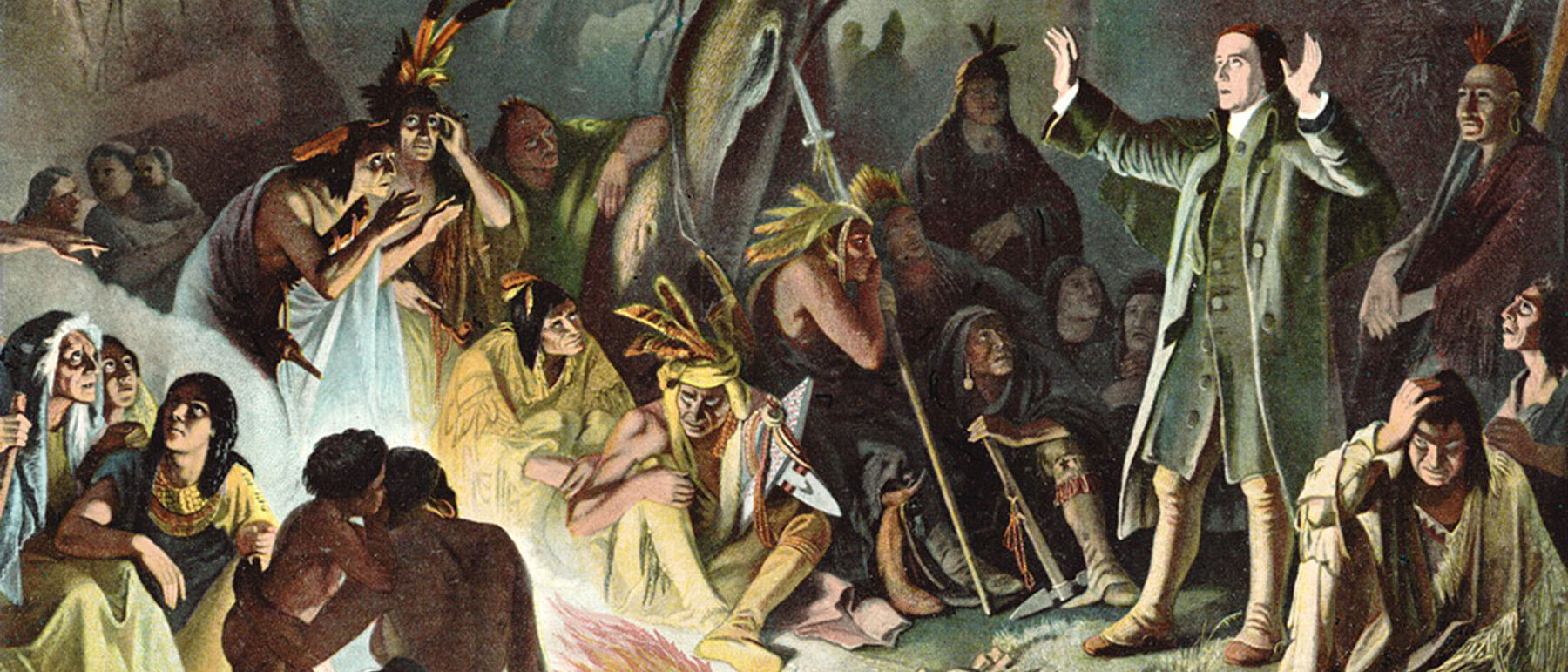The Moravian Mission - a historical summary
Through the Herrnhut Mission, the small community of Herrnhut (in Saxony) grew into a church with about 1,700 congregations in more than 40 countries - the worldwide Moravian Church/Unitas Fratrum. In 1732, ten years after its founding, Herrnhut had just under 400 inhabitants. Today, the worldwide Moravian Church has about 1.4 million members.
According to our understanding, mission is not a matter for specialists, but the task of every Christian. We are grateful that this realization was put into practice in our church earlier than in other churches. Church and mission have always belonged inseparably together in our church.
The Moravian Church is considered the first church in which, from the beginning, not only individuals but entire congregations burned for mission. At all times, their mission was done without imperial ulterior motives. It knew only one goal, "that the Gentiles may learn much of our Savior." As a driving force for the mission was enough the knowledge "that there are still souls who cannot believe because they have not heard (of Jesus)."
Although Count Nikolaus Ludwig von Zinzendorf (1700-1760) had come into contact with the external mission at a young age, it was not until August 21, 1732 that two missionaries, Leonhard Dober (1706-1766, a potter from Franconia) and David Nitschmann (1696-1772, a carpenter from Moravia), were sent out in Herrnhut.
The complete history of the Herrnhut Mission can be found here (german) as a pdf file.
Introduction Mission Theology
Count Nikolaus Ludwig von Zinzendorf (1700-1760) was the initiator of the Moravian mission. He himself visited the North American mission areas twice, which was something very special for an imperial count in view of the perilous sea voyage of several weeks in the 18th century.
Nowhere Zinzendorf expressed himself coherently or systematically on mission. A mission theology of Zinzendorf therefore does not exist. His statements on mission can be found in various sermons, speeches, letters, synod minutes and occasional writings.
Important was for Zinzendorf the following:
- The mission emanating from Europe is about winning firstfruits, not about Christianizing entire tribes or regions. Everything else will fall into place.
- Missionaries should involve native men and women in their work at an early stage and give them responsibility as well as suitable offices and tasks.
- Mission must go into the heart, i.e. it must result in a reorientation of the whole life; it must not aim at an outwardly formal conversion or a quick baptism.
- In principle, any person whose heart burns for Jesus Christ can be a missionary. Special theological training is not required for missionary work.
- Moravian mission is basically long-term and sustainable. Whoever goes on a mission does not undertake a visiting trip, but begins a strenuous work lasting several years.
- An export of the denominational diversity that exists in Europe must be avoided at all costs in the mission. What is important is not church growth, but personal faith.
- Missionaries should, as far as possible, live from the work of their hands and not depend primarily on donations from home or alms received.
- Those who serve in missions should not feel that they are bringing salvation, but rather that they are messengers. All mission comes from Jesus; human action can only prepare the way for this.
- Moravian mission is never characterized by a strategic approach; rather, it waits for a beckoning from God for the beginning and direction of its work.
- The countries visited by the missionaries are by no means godless areas. God was always there before the missionaries.
- Missionaries should appreciate the culture of the native peoples and beware of judging all things according to European criteria.
- The bearers of the mission should be neither Western Christian authorities nor colonial societies, neither committed individual Christians nor pious circles, but always the communities.
